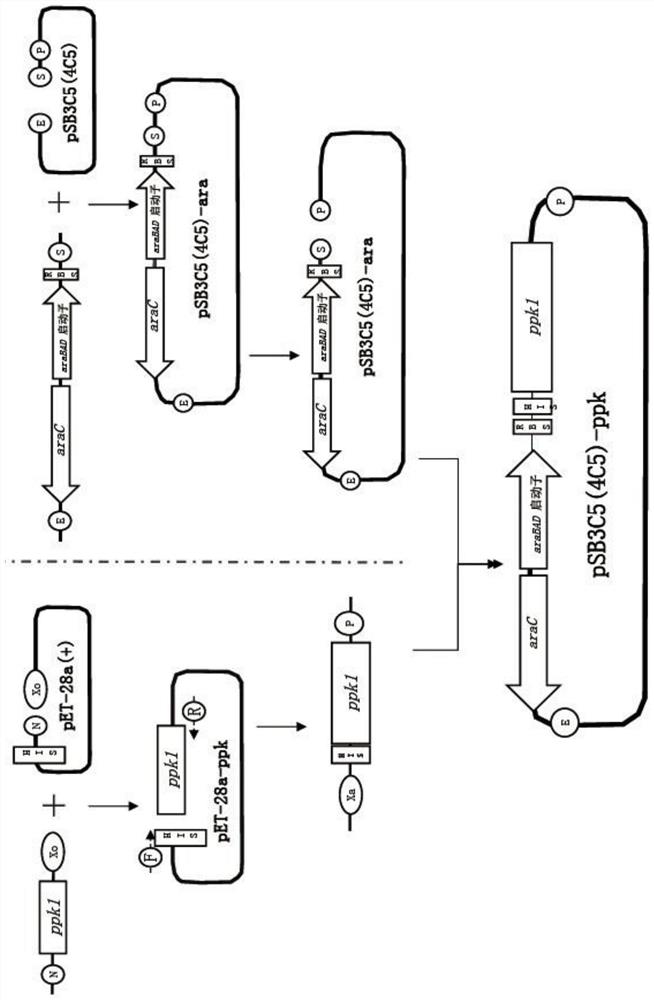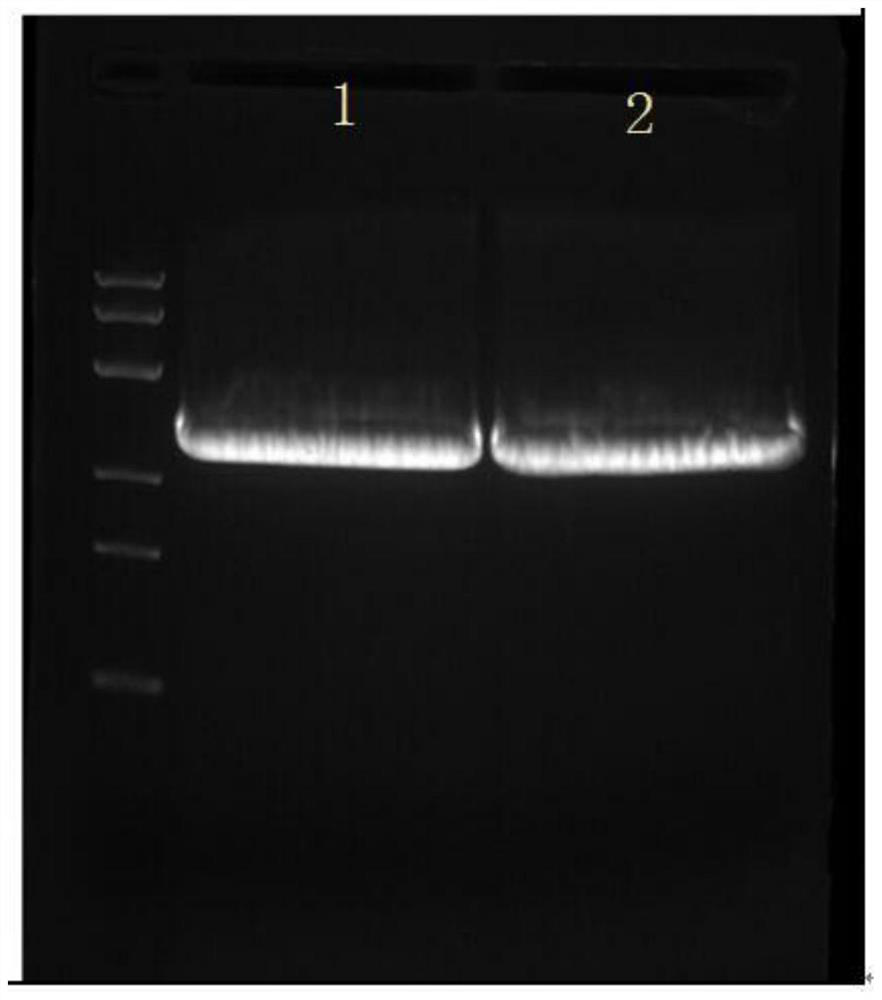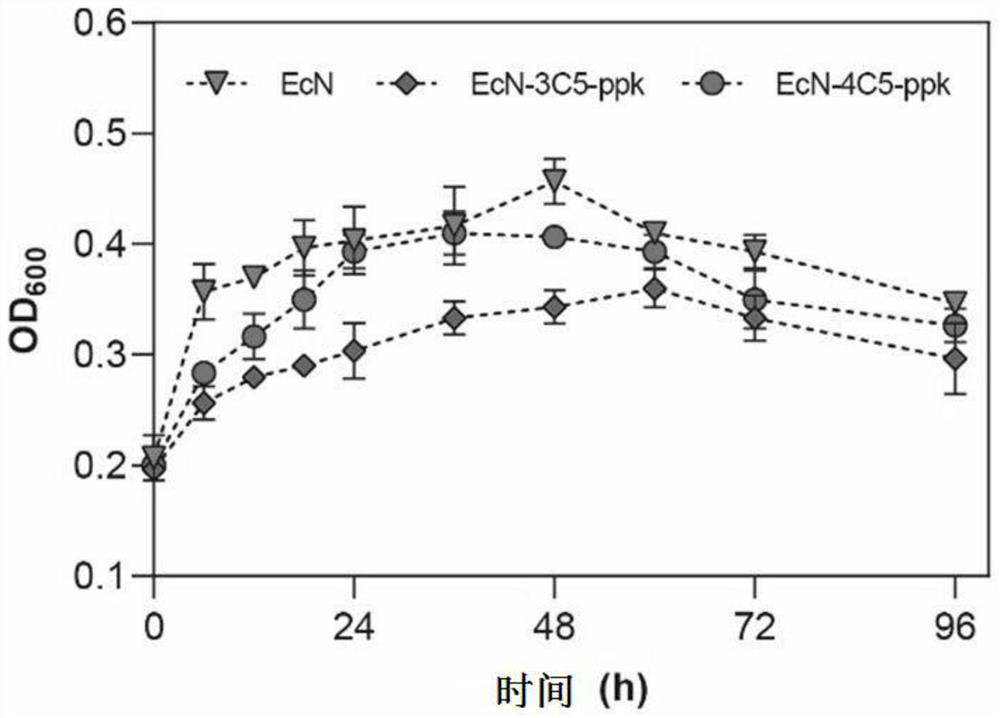Probiotics for reducing phosphorus and preparation method and application thereof
A probiotics and phosphorus reduction technology, applied in the field of biomedical engineering, can solve the problems of accumulation of heavy metals, inability to reduce phosphorus by hyperphosphatemia, and inability to be used by the human body, and achieve the effect of improving the level of phosphorus reduction.
- Summary
- Abstract
- Description
- Claims
- Application Information
AI Technical Summary
Problems solved by technology
Method used
Image
Examples
Embodiment 1
[0062] A preparation method for probiotics for phosphorus reduction, see figure 1 , including the following steps:
[0063] 1. Plasmid construction:
[0064] The ppk1 gene was collected from the EcN genome (GenBank: CP007799.1), and the method for obtaining the ppk1 gene was as follows: extracting the total DNA of Escherichia coli Nissle 1917 (EcN), and then amplifying it by PCR to obtain the ppk1 gene; An arabinose promoter was used to independently construct the low-copy vector pSB3C5 with a copy number of 10-50 and the medium-copy vector pSB4C5 with a copy number of 50-100, respectively named pSB3C5-ppk and pSB4C5-ppk. The specific methods are as follows:
[0065] (1) Clone ppk1: The ppk1 gene was cloned from the probiotic Escherichia coli Nissle 1917 by using primers 1F and 1R (the original Escherichia coli Nissle 1917 also had this gene, but the expression level was very low and did not show a phosphorus-lowering effect. After cloning and connecting to a specific plasmi...
Embodiment 2
[0099] Biological 3D printing, the steps are:
[0100] (1) The bio-3D printing ink was prepared by Jiang et al. The ink consisted of 1.0 g sodium alginate, 0.5 g gelatin, and 10 ml deionized water (see Jiang, W., Pei, R., Zhou, S.-F., 2020. 3D-printed xylanase within biocompatible polymers as excellent catalyst for lignocellular degradation. Chemical Engineering Journal 400, 125920. https: / / doi.org / 10.1016 / j.cej.2020.125920 );
[0101] (2) The ink is precipitated in a water bath at 60°C until it is completely dissolved;
[0102] (3) After culturing overnight at 37°C in LB medium, centrifuge the wild-type EcN, EcN-3c5-ppk and EcN-4c5-ppk cells (7000rpm, 5min), wash with HEPES buffer (20mM, pH 7.0) for 2 Second-rate;
[0103] (4) Before bio-3D printing, dilute to OD600 of 1.0 with HEPES buffer (20mM, pH 7.0), then mix 1mL cells in the dissolved ink (10ml);
[0104] (5) The parameters of biological 3D printing are set to 0.34mm, 0.4Mpa pressure;
[0105] (6) Drop the 3D...
Embodiment 3
[0108] 1. Bio-3D printing EcN phosphorus removal test
[0109] (1) Put the bio-3D printed EcN, EcN-3c5-ppk and EcN-4c5-ppk into 20mL artificial intestinal fluid containing 15mg P / L, and put it into a 50mL bioreactor;
[0110] (2) The bioreactor was placed in an incubator at 37° C., and 1 ml of liquid samples were taken at different time points to detect phosphorus levels.
[0111] 2. Analysis method
[0112] (1) Determination of total phosphorus using GB 11893-1989--ammonium molybdate spectrophotometry for total phosphorus determination;
[0113] (2) The morphology of 3D printed EcN, EcN-3c5-ppk and EcN-4c5-ppk was characterized by scanning electron microscopy (SEM, ZEISS), and the scanning voltage was set to 5kv;
[0114] (3) All results are expressed as mean ± standard deviation, and the software used for statistical analysis is GraphPad Prism 8.0 (San Diego, CA, USA), and analysis of variance (ANOVA) is used to evaluate the deviation between groups, and the p value is given...
PUM
 Login to View More
Login to View More Abstract
Description
Claims
Application Information
 Login to View More
Login to View More - R&D Engineer
- R&D Manager
- IP Professional
- Industry Leading Data Capabilities
- Powerful AI technology
- Patent DNA Extraction
Browse by: Latest US Patents, China's latest patents, Technical Efficacy Thesaurus, Application Domain, Technology Topic, Popular Technical Reports.
© 2024 PatSnap. All rights reserved.Legal|Privacy policy|Modern Slavery Act Transparency Statement|Sitemap|About US| Contact US: help@patsnap.com










